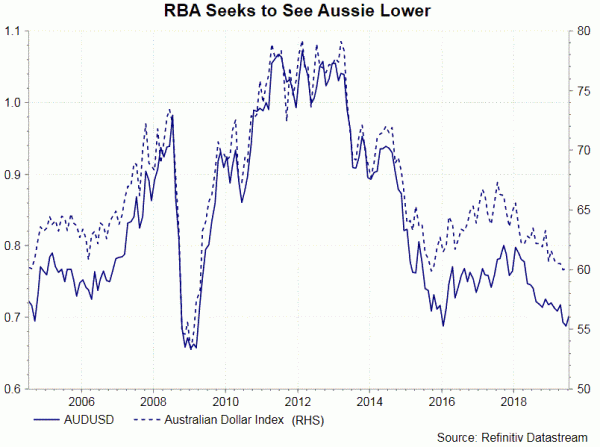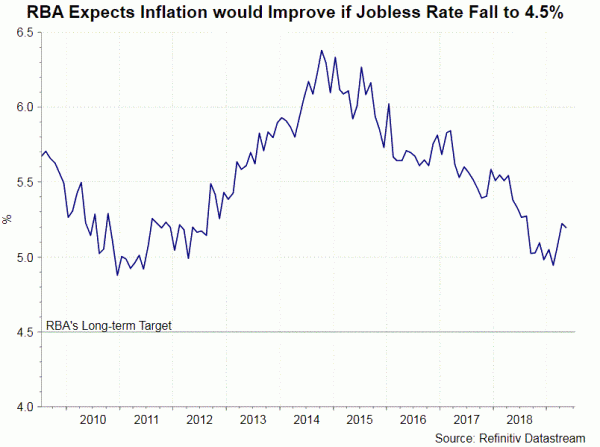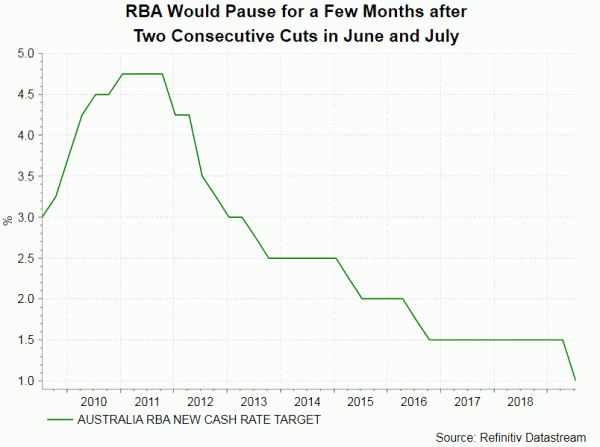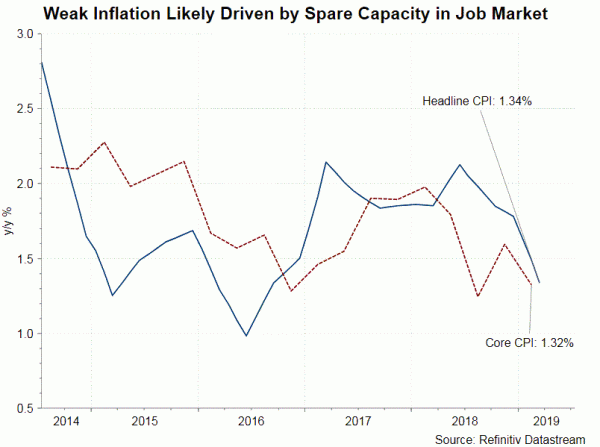RBA’s minutes for the July meeting revealed that the objective for lowering interest rate in July again was bringing down the unemployment rate and lowering the exchange rate. Unlike the June minutes, the central bank had not hinted more rate cuts would come in the near-term. Yet, we do not judge that this is less dovish sign. We believe the members would like to see how well the previous two rate cuts transmit to the real economy before more actions. RBA noted that further actions would be data-dependent and focused on the labor market. We expect more policy easing would be needed later this year to bring down the unemployment rate to RBA’s target.
 Reiterating the stance in the previous meeting, the members noted that “employment growth had remained strong“, although “some of the additional labour demand had been met by an increase in the participation rate, which had reached its highest level on record”. Yet, “forward-looking indicators, such as job advertisements and employment intentions, suggested that growth in employment would moderate over coming months”. The members judged that the current level of unemployment rate – 5.2%- as “elevated”. As such, further rate cut was needed to absorb the spare capacity. Meanwhile the minutest this month added that “the main channels through which lower interest rates would support the economy were a lower value of the exchange rate”. This suggests that exchange rate depreciation would be another goal in the near- to medium- term.
Reiterating the stance in the previous meeting, the members noted that “employment growth had remained strong“, although “some of the additional labour demand had been met by an increase in the participation rate, which had reached its highest level on record”. Yet, “forward-looking indicators, such as job advertisements and employment intentions, suggested that growth in employment would moderate over coming months”. The members judged that the current level of unemployment rate – 5.2%- as “elevated”. As such, further rate cut was needed to absorb the spare capacity. Meanwhile the minutest this month added that “the main channels through which lower interest rates would support the economy were a lower value of the exchange rate”. This suggests that exchange rate depreciation would be another goal in the near- to medium- term.
 Globally, RBA noted that economic growth had “remained moderate over preceding months“. They reiterated the elevated risks in trade tensions “although no new measures had been introduced since the previous meeting“. On inflation, the members acknowledged improvement in the wage level but the growth “had not yet been translated into stronger inflationary pressures and inflation remained below target in most advanced economies”.
Globally, RBA noted that economic growth had “remained moderate over preceding months“. They reiterated the elevated risks in trade tensions “although no new measures had been introduced since the previous meeting“. On inflation, the members acknowledged improvement in the wage level but the growth “had not yet been translated into stronger inflationary pressures and inflation remained below target in most advanced economies”.
In the concluding statement, RBA pledged to “monitor developments in the labour market closely and adjust monetary policy if needed”. This is compared with the reference in June minutes that “it was more likely than not that a further easing in monetary policy would be appropriate in the period ahead”. This obviously does not imply RBA has been done in rate cuts. Rather, the members would gauge how well the cuts in June and July do to “provide more Australians with jobs and assist with achieving more assured progress towards the inflation target”. RBA’s target is to bring down the unemployment rate to as low as 4.5%, from the current 5.2%. Against the backdrop of rising downside risk to global economy and lingering uncertainty in the US-China trade war, we believe further rate cuts later this year would be needed














